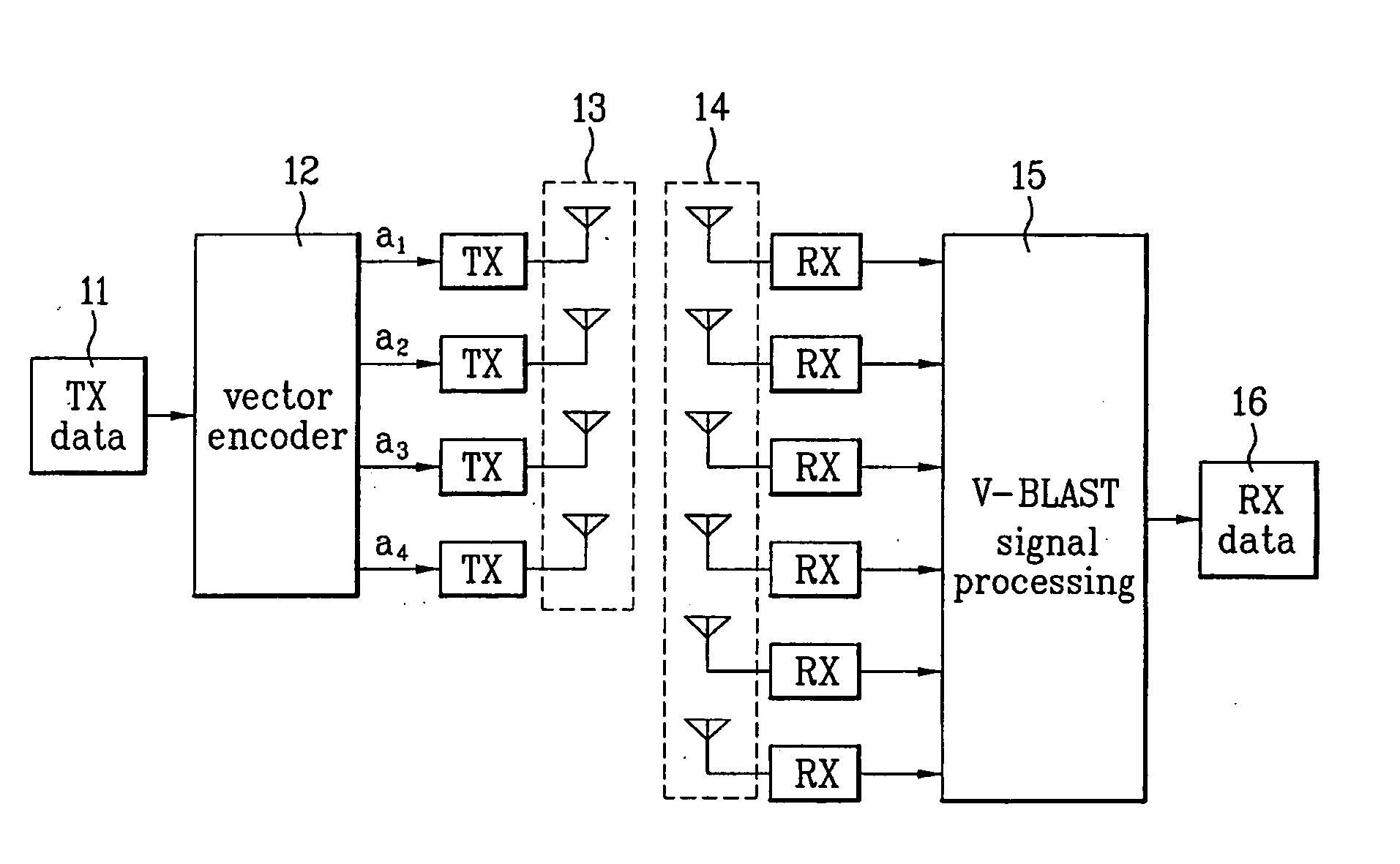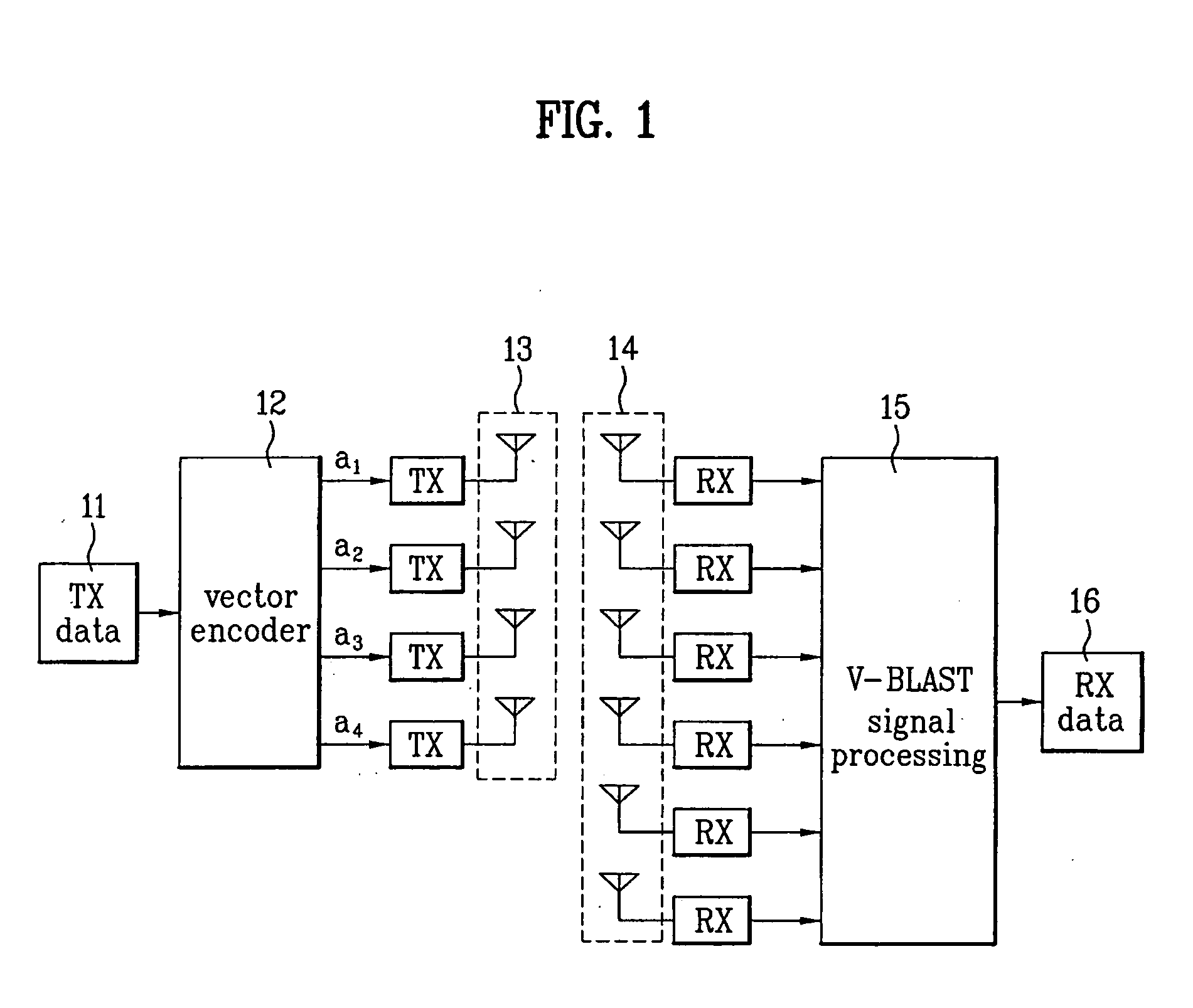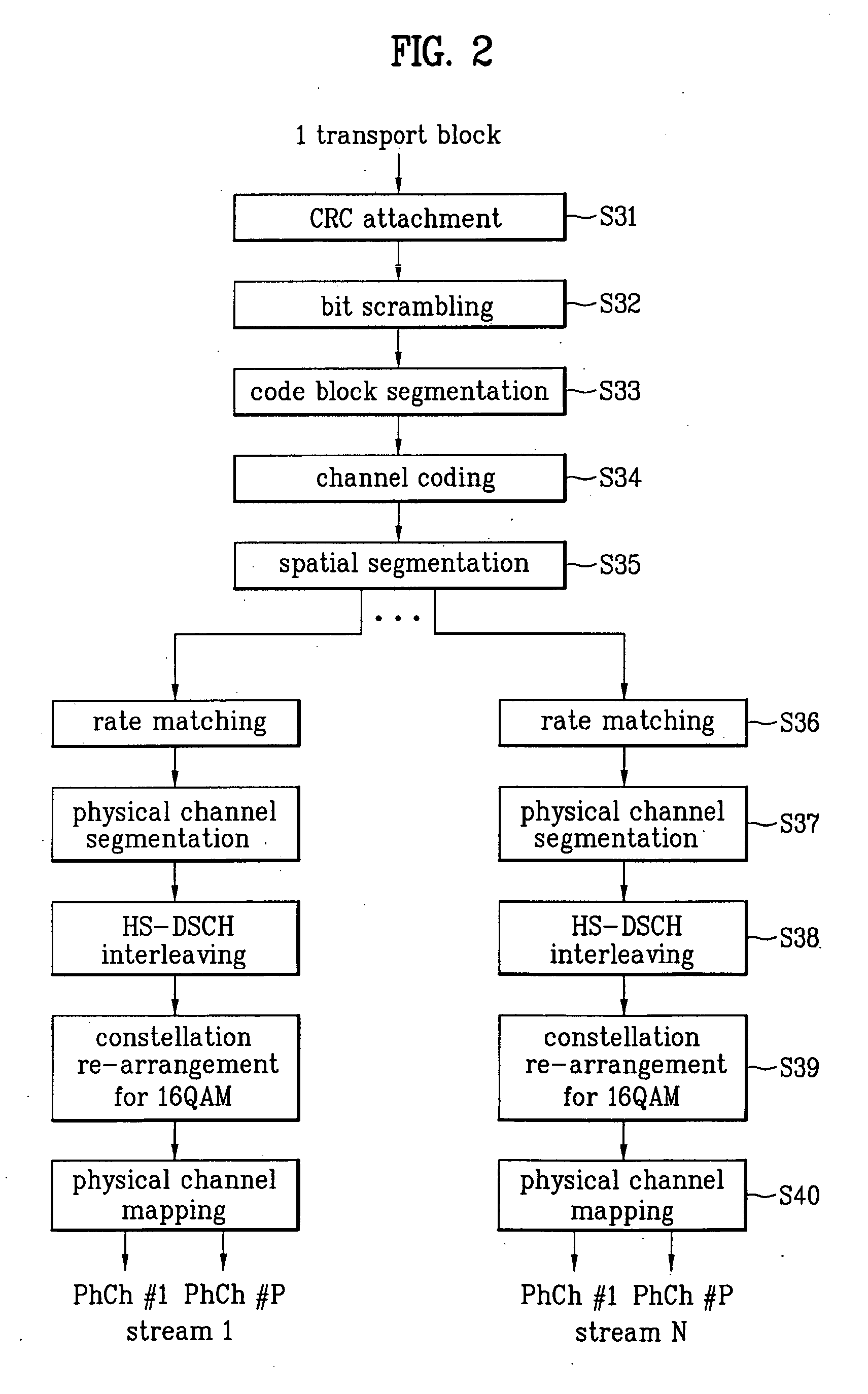Signal processing apparatus and method using multi-output mobile communication system
a mobile communication system and signal processing technology, applied in the field of mobile communication system, can solve the problems of inapplicability of harq to the v-blast system, failure to propose the appending of error check bits, etc., and achieve the effect of efficient application of harq
- Summary
- Abstract
- Description
- Claims
- Application Information
AI Technical Summary
Benefits of technology
Problems solved by technology
Method used
Image
Examples
first embodiment
[0041]FIG. 2 is a process flowchart for generating a plurality of data streams from a data block transported according to the present invention. In this embodiment, it is assumed that only one transport block is being processed per TTI (Transmission Time Interval). In FIG. 2, the spatial segmentation and the channel coding are performed before rate matching. A spatial segmentation is required to segment an input block into multiple blocks for simultaneous transmission of multiple data streams.
[0042] Referring to FIG. 2, a data block delivered from a higher layer of the transmitting system is appended with error check information to be used in a receiving system (S31). Preferably, CRC (cyclic redundancy check) can be used as the error check information. Preferably, the higher layer selects the modulation scheme, such as QPSK or 16 QAM, and the number of multicodes, such as the Walsh codes in the CDMA system, of each stream. In addition, higher layer informs physical layer of the numb...
second embodiment
[0046]FIG. 3 is a process flowchart for generating a plurality of data streams from a data block transported from a higher layer according to the present invention. In FIG. 3, the spatial segmentation is preferably performed after the channel coding and the rate matching.
[0047] In the second embodiment, the number of bits transmitted in physical channel during a TTI is dependent on the modulation scheme and the number of multicodes of each stream. A rate matched data block is to be segmented in proportion to the ratio of the number of bits per stream. Since a transport block goes through one rate matching block, the code rates of all streams are the same. In other words, the modulation scheme and the number of multicodes can be separately controlled per stream but code rate cannot be separately controlled per stream.
[0048] Referring to FIG. 3, a data block delivered from an upper layer of the system is appended with error check information in a receiving end in step S41. Preferably...
third embodiment
[0051]FIG. 4 is a process flowchart for generating a plurality of data streams from a data block transported from a higher layer according to the present invention. In FIG. 4, the channel coding and the rate matching for each data stream are preferably performed after the spatial segmentation.
[0052] Referring to FIG. 4, once a data block is delivered from a higher layer, error check information in a receiving end is appended to the data block (S61). CRC (cyclic redundancy check) can be used as the information for the error check.
[0053] The bit scrambling (S62) and the spatial segmentation (S63) are carried out on the CRC-bit appended data block, in turn. The spatial segmentation (S63) generates independent data streams amounting to ‘N’ from one data block delivered from the higher layer. After completion of spatial segmentation (S63), code block segmentation (S64) and channel coding (S65) are carried out on the respective segmented data streams.
[0054] After rate matching (S66) has...
PUM
 Login to View More
Login to View More Abstract
Description
Claims
Application Information
 Login to View More
Login to View More - R&D
- Intellectual Property
- Life Sciences
- Materials
- Tech Scout
- Unparalleled Data Quality
- Higher Quality Content
- 60% Fewer Hallucinations
Browse by: Latest US Patents, China's latest patents, Technical Efficacy Thesaurus, Application Domain, Technology Topic, Popular Technical Reports.
© 2025 PatSnap. All rights reserved.Legal|Privacy policy|Modern Slavery Act Transparency Statement|Sitemap|About US| Contact US: help@patsnap.com



